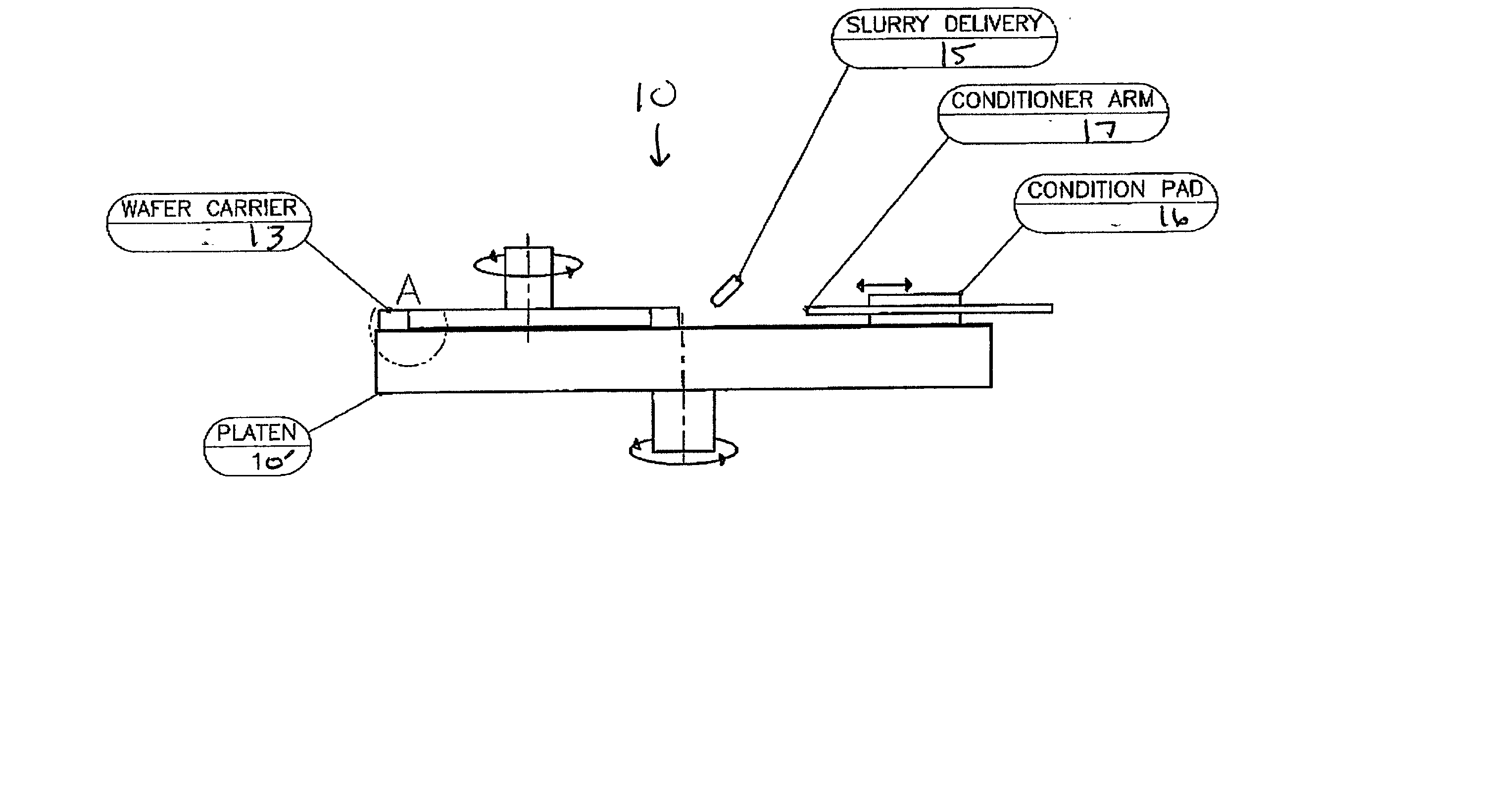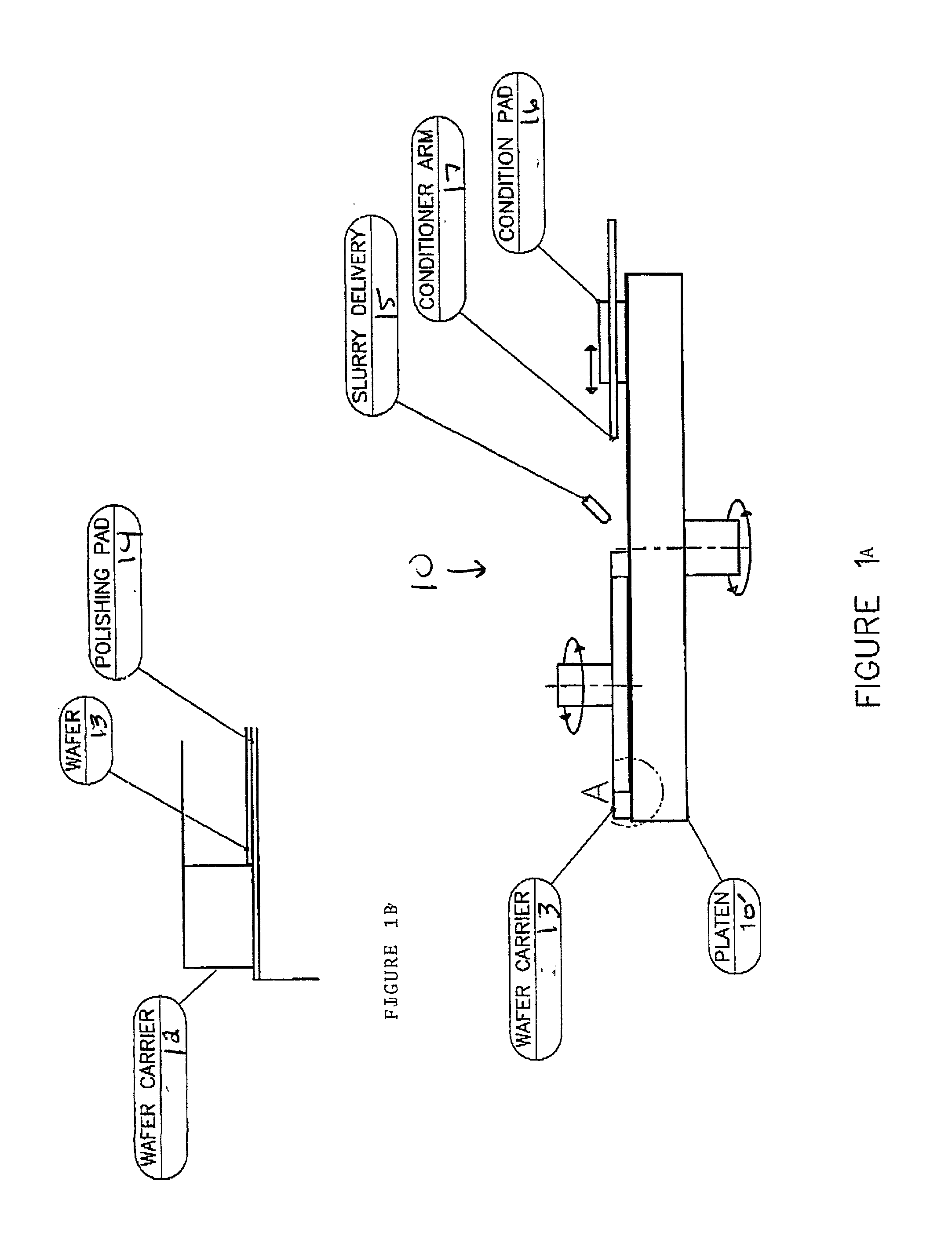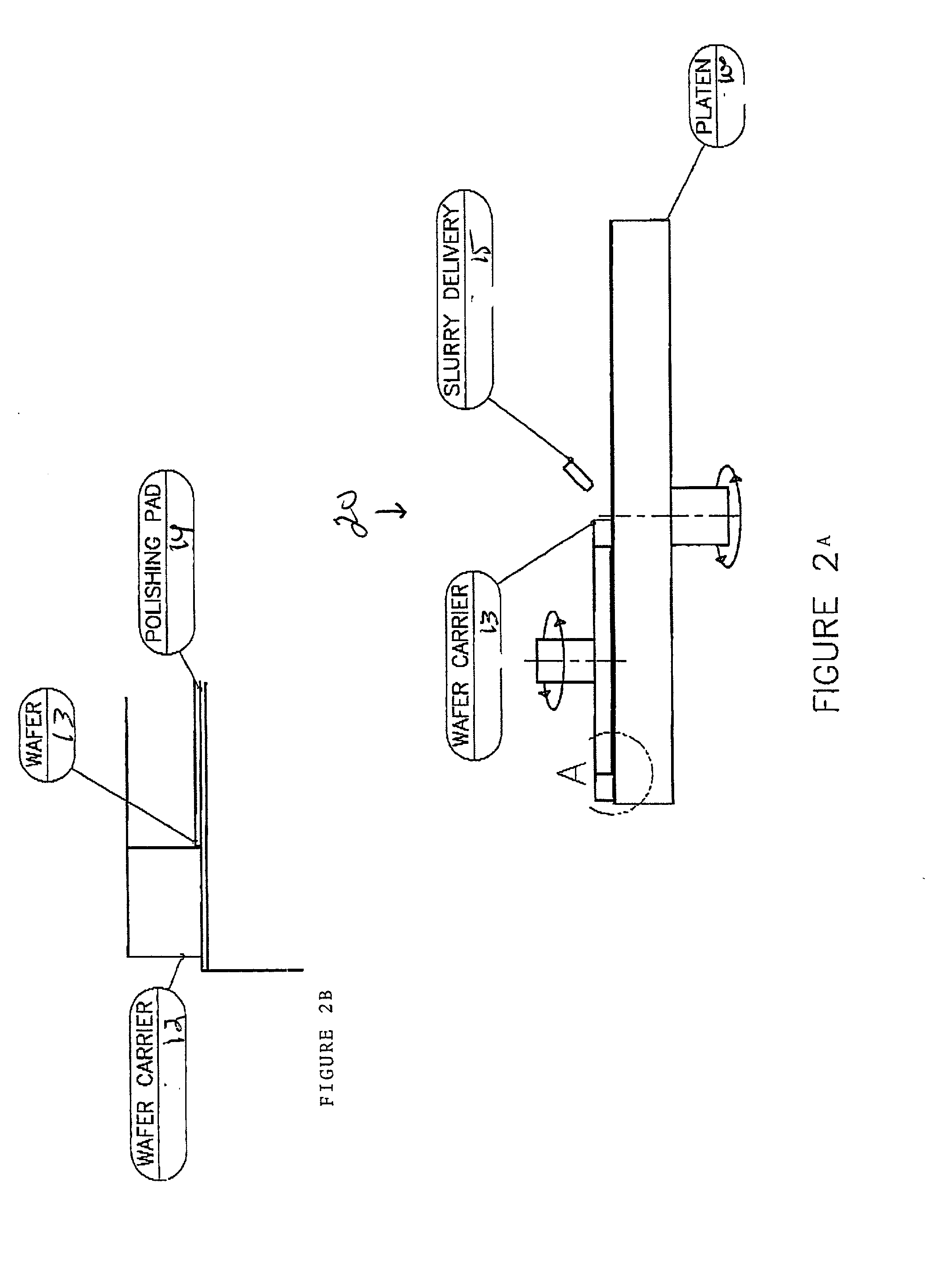Polishing pad for use in chemical - mechanical palanarization of semiconductor wafers and method of making same
- Summary
- Abstract
- Description
- Claims
- Application Information
AI Technical Summary
Benefits of technology
Problems solved by technology
Method used
Image
Examples
Embodiment Construction
[0025] The polishing pad for polishing or planarizing semiconductor wafers and similar materials of the present invention is a three dimensional, porous fiber structure that is impregnated and bound together with a thermoset resin that is creep-resistant, and ground on one or both surfaces thereof in order to produce asperities therein. The polishing pad's asperities may be in the range of between 5 and 50 microns, with a preferred range of between 10 and 25 microns. These asperities provide random flow channels for the flow therein of polishing slurry. The surface may also be grooved in order to enhance the flow of the polishing slurry.
[0026] The polishing pad is a matrix of absorbent fibers impregnated with a thermoset resin, preferably phenolic, is densified, grooved, if required, and cured to provide a rigid, yet porous structure. Other thermoset resins may be used, such as silicones, epoxies, blends thereof, and the like. The fibers that may be used are: natural or synthetic in...
PUM
| Property | Measurement | Unit |
|---|---|---|
| Length | aaaaa | aaaaa |
| Length | aaaaa | aaaaa |
| Length | aaaaa | aaaaa |
Abstract
Description
Claims
Application Information
 Login to View More
Login to View More - R&D
- Intellectual Property
- Life Sciences
- Materials
- Tech Scout
- Unparalleled Data Quality
- Higher Quality Content
- 60% Fewer Hallucinations
Browse by: Latest US Patents, China's latest patents, Technical Efficacy Thesaurus, Application Domain, Technology Topic, Popular Technical Reports.
© 2025 PatSnap. All rights reserved.Legal|Privacy policy|Modern Slavery Act Transparency Statement|Sitemap|About US| Contact US: help@patsnap.com



